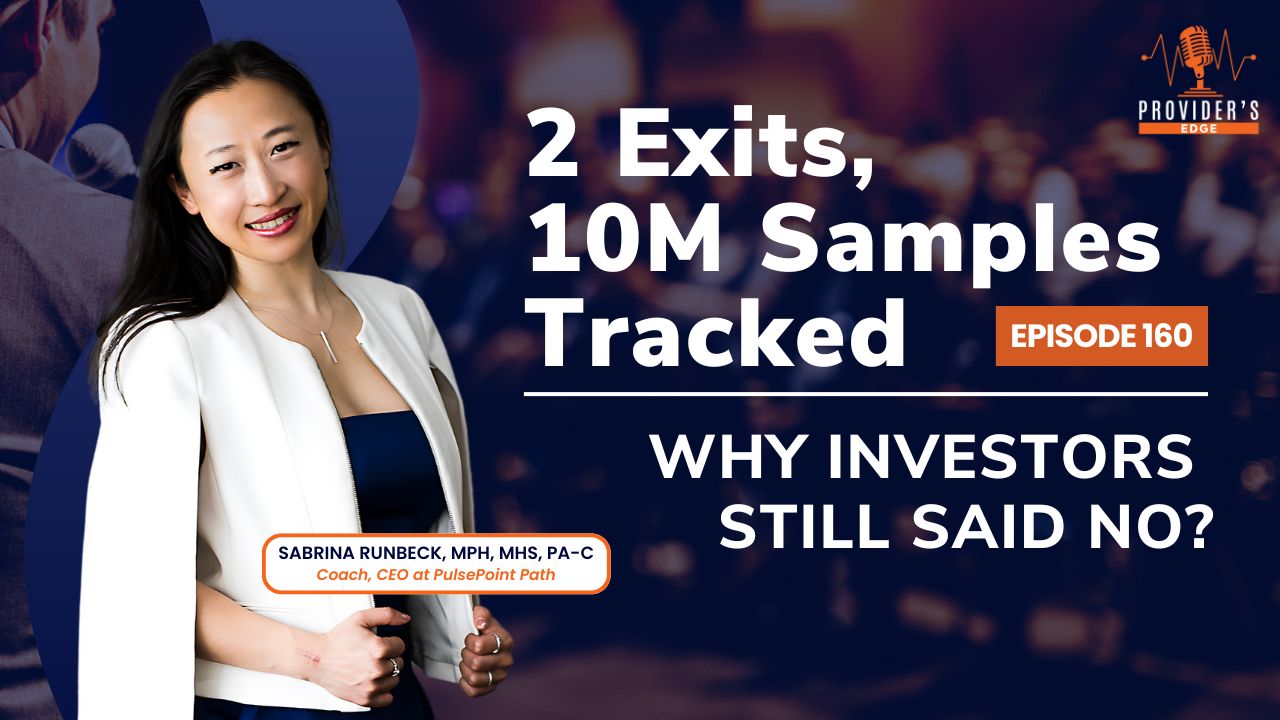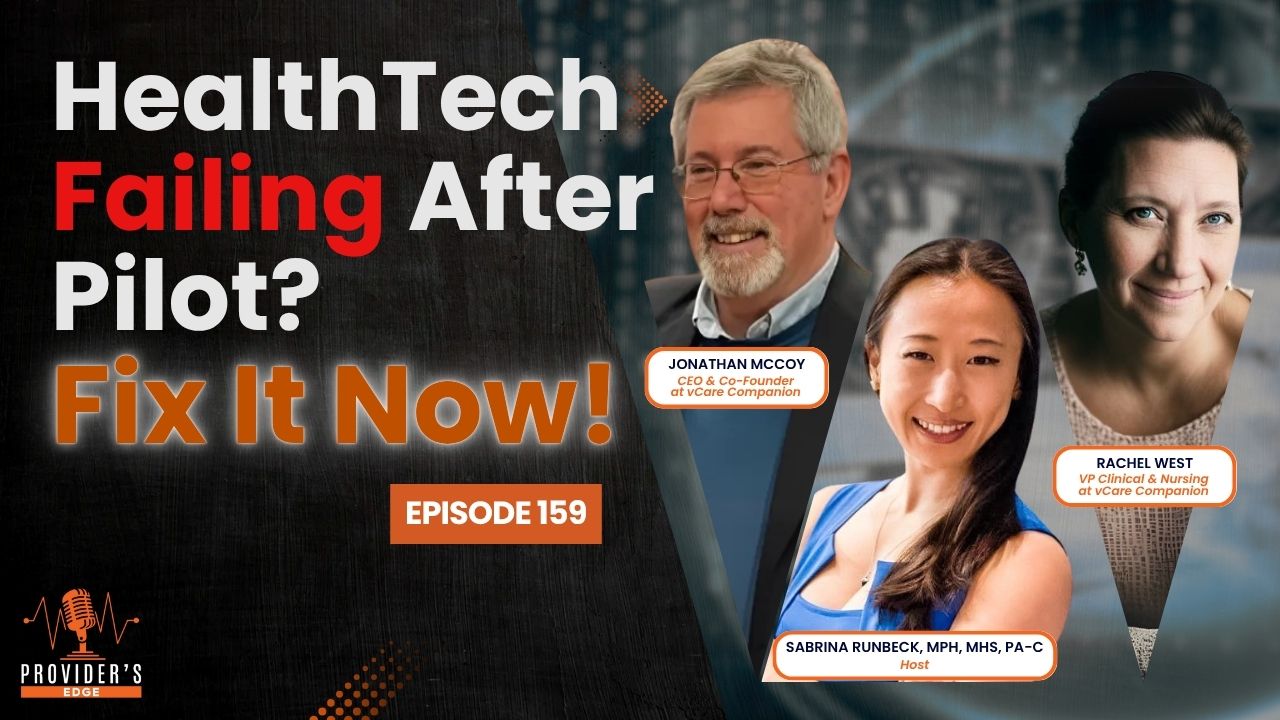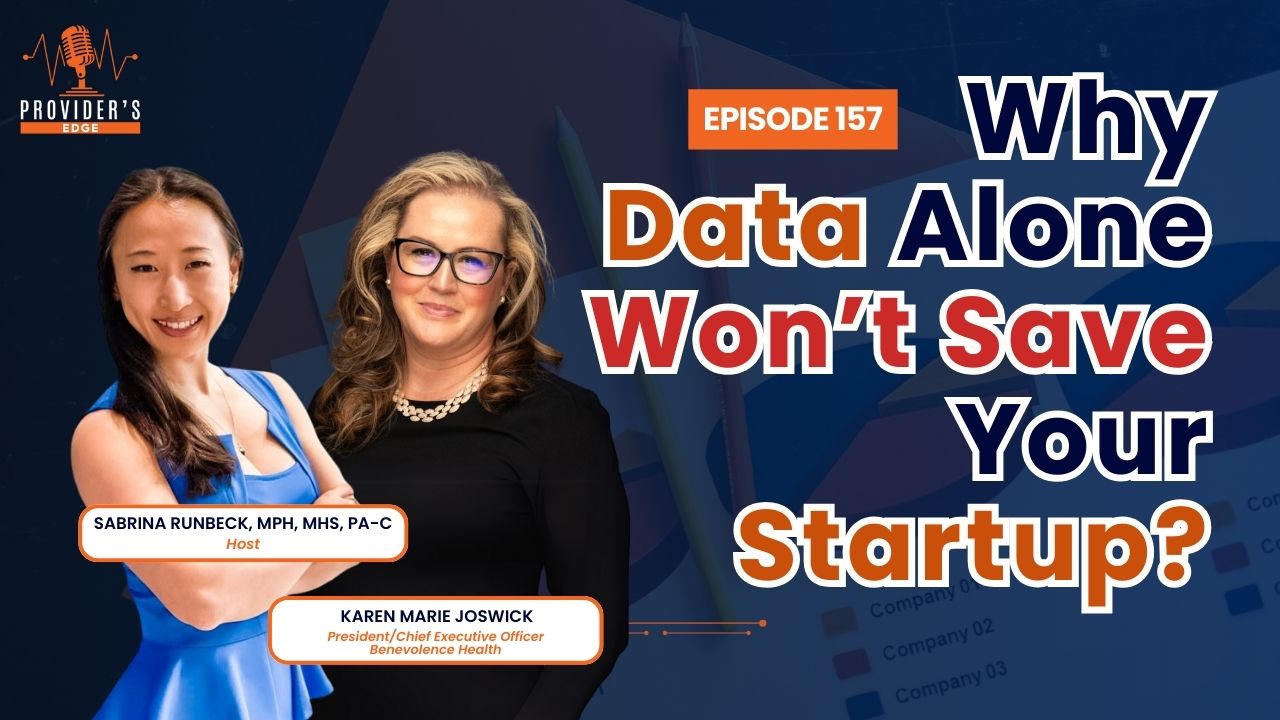
The $500M Investment Red Flag:
When Proven Healthcare Entrepreneurs Can't Secure Funding
As healthcare investors, we've all encountered this scenario: A founder walks into your office with an impressive track record—two successful exits, partnerships with industry giants like Siemens Healthineers, and technology that's already processed 10 million medical samples. On paper, it's exactly the kind of healthcare investment opportunity that should have you reaching for your checkbook.
Yet something feels off. Despite the compelling credentials, you find yourself hesitating. The pitch doesn't quite land. The investment risk management alarms in your head start ringing, even though you can't pinpoint exactly why.
This isn't hypothetical. It's exactly what happened during a recent healthcare investment analysis session where we evaluated Javier Cuello's pitch for H+Trace, his medical traceability technology addressing a massive market gap in laboratory error prevention.
Listen anywhere you get your podcastin' on.
Live Interview

The Due Diligence Paradox: When Great Companies Present Poorly
Healthcare venture capital decisions rely heavily on three critical factors during due diligence process evaluation: team credibility, market opportunity, and execution clarity. Javier's company had the first two locked down, but the third—execution clarity—remained frustratingly elusive.
This represents a growing challenge in healthcare technology investments: founders with solid fundamentals who simply can't communicate their value proposition effectively during investor decision making processes.
The Market Opportunity Analysis
Javier opened with compelling statistics: "Every day in the U.S., the equivalent of a jumbo jet crashes from preventable medical errors." The healthcare market analysis supported his claims—medical errors kill over 250,000 Americans annually, with two-thirds of lab errors occurring in the preanalytical stage his technology addresses.
From an investment portfolio perspective, this represents a massive healthcare investment opportunity. The total addressable market exceeds $500 million, with minimal direct competition and clear regulatory tailwinds supporting innovation in medical safety technology.
Yet despite this strong medical technology investment strategy foundation, something critical was missing from the healthcare startup investor analysis.
The Communication Gap That Costs Billions
Here's what every venture capital healthcare professional needs to understand: technical competence doesn't automatically translate to investment readiness. Even founders with proven medical innovation investment track records can fail to articulate why their solution deserves funding now.
Missing Investment Criteria Elements
During our healthcare startup funding evaluation, several key investment fundamentals were absent from Javier's presentation:
- The "Why Now" Factor While Javier mentioned that his space hadn't seen innovation for 25 years, he failed to explain what market dynamics changed to make this the optimal investment timing. Healthcare technology ROI analysis requires understanding catalysts that create urgency—regulatory changes, technological breakthroughs, or market consolidation trends.
- Competitive Differentiation Analysis The healthcare investment due diligence process demands clear competitive positioning. Existing solutions exist in laboratory quality control, but Javier didn't effectively differentiate his wireless, automated approach from current manual processes or competing technologies.
- Revenue Model Clarity Healthcare startup valuation methods rely heavily on predictable revenue streams. While H+Trace mentioned tracking millions of samples, the specific business model—subscription, per-transaction, or licensing—remained unclear, making healthcare technology investments analysis challenging.
The Investor's Dilemma: Evaluating Hidden Gems
This scenario creates a significant challenge for healthcare investment consulting professionals and venture capital teams. How do you identify valuable opportunities when founders can't effectively communicate their value?
Red Flags vs. Communication Issues
Smart medical technology venture capital investors must distinguish between fundamental business problems and presentation issues. Consider these investment risk management evaluation criteria:
Legitimate Red Flags:
- Unclear market positioning
- No demonstrated traction metrics
- Weak competitive moats
- Unrealistic financial projections
Communication Red Flags (Potentially Fixable):
- Technical jargon overload
- Missing "why now" narrative
- Unclear go-to-market strategy
- Weak call-to-action
Javier's pitch fell into the second category—solid fundamentals obscured by presentation challenges.
The $10M Lesson: Why Presentation Quality Affects Valuations
Healthcare venture capital trends show that companies with superior communication receive higher valuations, even when underlying metrics are comparable. This "presentation premium" can range from 15-30% in early-stage medical device investment rounds.
The reasons are straightforward:
- Reduced Due Diligence Costs: Clear presentations accelerate investment fundamentals analysis
- Lower Perceived Risk: Articulate founders appear more likely to execute successfully
- Easier Syndication: Well-presented deals attract co-investors more readily
- Board Confidence: Clear communicators inspire confidence in ongoing healthcare investment opportunities
Strategic Investment Framework: Beyond the Pitch
For healthcare technology investment strategy optimization, consider this enhanced evaluation framework:
Primary Assessment Criteria
- Market Size and Growth: Is this a billion-dollar market opportunity?
- Technical Differentiation: Does the solution offer genuine competitive advantages?
- Team Execution History: Track record of successful healthcare technology development
- Regulatory Pathway: Clear route to market approval and adoption
Secondary Assessment Factors
- Communication Effectiveness: Can founders articulate value to customers and partners?
- Strategic Partnerships: Industry relationships that accelerate market penetration
- Capital Efficiency: Demonstrated ability to achieve milestones with available resources
- Scalability Architecture: Technology and business model designed for rapid growth
Investment Decision Framework: The Three-Question Test
Before making healthcare startup investment decisions, apply this simplified framework:
- Does the solution solve a real, expensive problem? (Market validation)
- Can this team execute better than alternatives? (Team assessment)
- Is the growth path to 10x returns clear? (Scalability analysis)
If any answer is "unclear" rather than "no," consider whether coaching could transform the opportunity.
The Hidden ROI: Investing in Communication
Forward-thinking healthcare investment consulting firms increasingly offer presentation coaching as part of their venture capital healthcare portfolio support. The logic is compelling: a 20% improvement in founder communication effectiveness can yield significant returns through:
- Faster Customer Acquisition: Clearer value propositions accelerate sales cycles
- Enhanced Talent Recruitment: Compelling vision attracts top-tier team members
- Improved Strategic Partnerships: Better communication facilitates key relationships
- Easier Follow-on Funding: Strong presentations attract subsequent investment rounds
The Competitive Advantage: Pattern Recognition in Healthcare Investments
Experienced medical technology venture capital professionals develop pattern recognition for identifying promising opportunities despite presentation weaknesses. Key indicators include:
- Obsessive Customer Focus: Founders who deeply understand user pain points
- Technical Innovation: Solutions that leverage breakthrough technologies effectively
- Market Timing: Companies positioned to benefit from healthcare industry trends
- Execution Momentum: Demonstrated ability to achieve milestones despite limited resources
Investment Thesis: The Communication-Quality Correlation
Our healthcare market analysis suggests a strong correlation between founder communication quality and long-term investment performance. Companies whose founders master effective communication typically achieve:
- 40% faster time-to-market for new products
- 60% higher customer lifetime values
- 35% more successful strategic partnerships
- 50% greater success rates in follow-on funding
Strategic Implications for Healthcare Investment Portfolios
Healthcare technology investments benefit from a balanced approach that weighs both fundamental strength and communication effectiveness. Consider these investment portfolio optimization strategies:
High-Potential, Poor Communication
Invest with coaching support and clear communication milestone requirements.
Strong Fundamentals, Good Communication
Standard investment approach with accelerated due diligence timelines.
Weak Fundamentals, Excellent Communication
Proceed with extreme caution—presentation quality may mask underlying issues.
The Future of Healthcare Investment Due Diligence
Healthcare venture capital trends indicate growing sophistication in evaluation methodologies. Leading firms now incorporate communication assessment directly into their due diligence process, recognizing that founder effectiveness directly impacts investment outcomes.
This evolution reflects a broader understanding: in healthcare technology markets, the best solution doesn't always win—the best-communicated solution wins.
The lesson for investors is clear: exceptional opportunities sometimes come disguised as mediocre presentations. Developing the skills to identify and nurture these hidden gems represents a significant competitive advantage in today's healthcare investment landscape.
When founders like Javier combine proven execution ability with breakthrough technology but struggle with communication, the smart money doesn't walk away—it invests in both the company and the communication transformation that unlocks its full potential.
For healthcare investment professionals seeking deeper insights into communication-driven due diligence methodologies, connect with our team for specialized healthcare investment consulting services at PulsePointPath.com/Power-Partner-Call
Recommended Podcast Episodes
Be a guest on our show
The Provider's Edge show is always looking to feature healthcare change-makers and celebrate the work they are doing to improve healthcare.
Together, we can encourage other healthcare entrepreneurs and startup founders to up-level their businesses.
If you or someone you know could be a good fit as a guest on the show, please click on the bottom below to apply as a speaker.
Healthcare Entrepreneurs!
I can help you gain visibility and credibility in the right circles so you can accelerate your mission and profitability!
After overcoming burnout working in surgery, I went back to my roots in neuroscience and public health. I learned the importance of building key human relationships with my team throughout our organization.
While helping healthcare executives and entrepreneurs to get out of the day-to-day operation of their practice, I realized I needed more visibility and more connections to reach my ideal clients.
Once I set out to be highly visible in the right circles, I was able to leverage my network of strategic partners to convert clients 5x higher than any other marketing channel I had tried previously.
Now I help healthcare change-makers to accelerate their impact and increase profitability by gaining visibility and credibility with the right strategic partners.
My clients no longer worry about where their next client is coming from, the need to plan additional budget for ads spending, or losing the ability to connect with others because their social media account is shut down.
If you want to share your social mission with the world and gain pivotal supporters that become loyal clients... then you are in the right place, with the right consultant who is also a recovered clinician.




